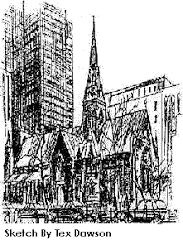 Daniele Crespi, The Last Supper, Pinocoteca di Brera, Milan, 1624-25
Daniele Crespi, The Last Supper, Pinocoteca di Brera, Milan, 1624-25
Click to read about the Pange Lingua.
Click to read about Le Livre d’orgue de Montréal in The Canadian Encylopedia.
Click to read the Analekta programme notes for the Kenneth Gilbert recording of Le Livre d’orgue de Montréal, including the following excerpt:
VII. Pange Lingua (man. nos. 270 to 272): The “Plein Jeu” which opens this hymn to the Holy Sacrament — sung at Vespers in France as well as in New France — is one of the rare piece in the manuscript where one hears the plain chant used as a cantus firmus in the bass. The ornementation of the plain chant in the “Récit sur le même chant” reminds one of the Pange Lingua by Nicolas de Grigny, the most famous of Lebègue’s students. The concluding “Dialogue” also borrows its thematic material from the plain chant.
Performance of the Pange Lingua from Le Livre d’orgue de Montréal by Kenneth Gilbert on the Wolff organ of Redpath Hall, McGill University:
VII. Pange Lingua: Plein Jeu; Récit sur le mesme chant; Dialogue sur le mesme chant [listen]
Click to read about Le Livre d’orgue de Montréal in The Canadian Encylopedia.
Click to read the Analekta programme notes for the Kenneth Gilbert recording of Le Livre d’orgue de Montréal, including the following excerpt:
VII. Pange Lingua (man. nos. 270 to 272): The “Plein Jeu” which opens this hymn to the Holy Sacrament — sung at Vespers in France as well as in New France — is one of the rare piece in the manuscript where one hears the plain chant used as a cantus firmus in the bass. The ornementation of the plain chant in the “Récit sur le même chant” reminds one of the Pange Lingua by Nicolas de Grigny, the most famous of Lebègue’s students. The concluding “Dialogue” also borrows its thematic material from the plain chant.
Performance of the Pange Lingua from Le Livre d’orgue de Montréal by Kenneth Gilbert on the Wolff organ of Redpath Hall, McGill University:
VII. Pange Lingua: Plein Jeu; Récit sur le mesme chant; Dialogue sur le mesme chant [listen]
